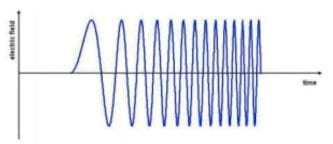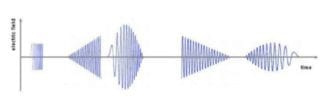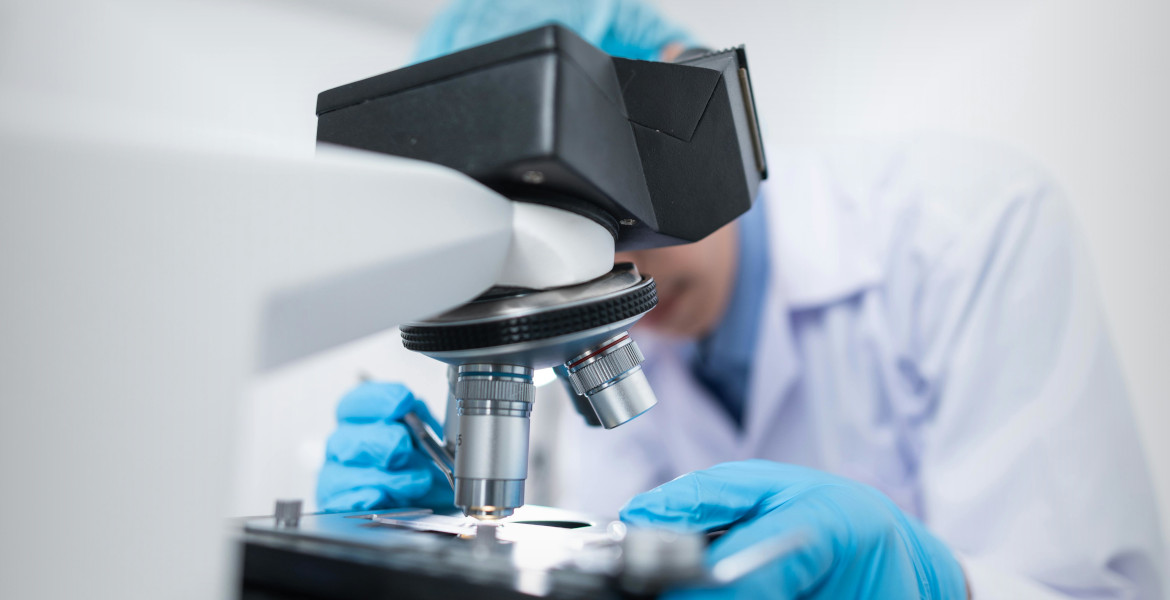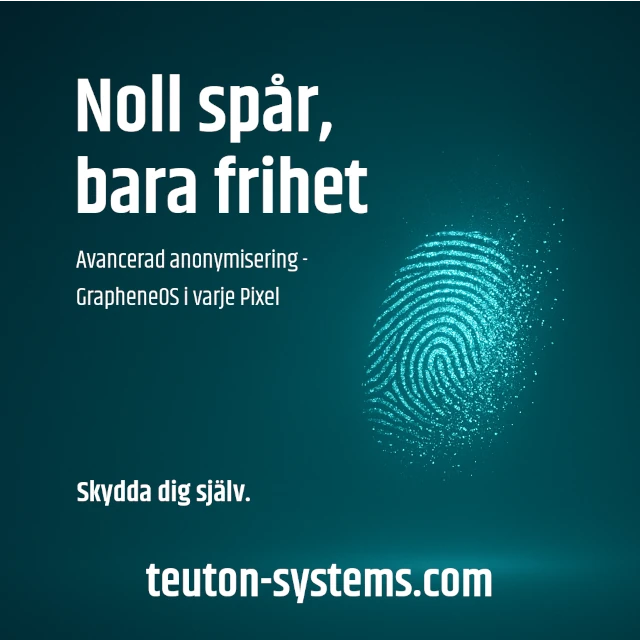Important information is often overlooked by ordinary people because facts, as Al Gore observed, are "inconvenient truths" or they run counter to social practice or company profits.
A scientific review article by three embattled scientists published by a little-known but reputable scientific publisher is a case in point. The paper, Real versus Simulated Mobile Phone Exposures in Experimental Studies1, by Dr. Dimitris J. Panagopoulos, Assoc. Prof. Olle Johansson and Dr. George L. Carlo is published by Hindawi Publishing Corp.2 based in Cairo, also publisher of the BioMed Research International journal.
In another paper published a month earlier in June 2015, authors Vincent Larivière, Stephanie Haustein, and Philippe Mongeon of the Université de Montréal entitled, The Oligopoly of Academic Publishers in the Digital Era3, note that "Combined, the top five most prolific publishers account for more than 50% of all papers published in 2013." Therefore the growing amount of scientific research is being controlled by a handful of publishers. With fewer opportunities to publish, access to the public is limited and important information can be denied the general public while limiting the career prospects of scientists who must "publish or perish".
Lesser-known publishers like Hindawi are a breath of fresh air to academia and a source of information which would otherwise - purposely or not - be overlooked.
Essentially, the Panagopoulos-Johansson-Carlo article refutes industry practices relating to rating devices which use electromagnetic signals - everything from baby monitors, to cell phones and other forms of microwave-based communications. The International Agency for Research on Cancer (IARC) and the Health Protection Agency (HPA) both recognize "unreliable dosimetry", "highly variable" exposures and the absence of controls. The result is that device manufacturers produce signals and rely on readings taken by other machines. The article notes: "The aim of the present study is to review biological and clinical experimental studies on mobile phone radiation effects which have employed exposures with real mobile phone emissions, as opposed to the mainstream studies which employ simulated mobile phone emissions produced by generators or test phones, and seek an explanation for the divergent results reported in the literature."
Two years ago the same three scientists collaborated on a paper critical of the Specific Absorption Rate (SAR) as an entirely inadequate method of measuring EMF dosimetry and bioactivity assessment. Taken together, their work is the equivalent of fracking the bedrock under the edifice of industry-supported microwave safety standards.
"The new study was prompted by the fact that when we want to study the effects of a device emitting radiation," explained Panagopoulos, "we must simply use the device itself, not any simplified simulation of it. It is absurd that international health organizations direct scientists to use simplified simulations instead of real mobile phone devices simply because the emissions are very different. I had these opinions since my early PhD years, and when I started designing and performing my first PhD experiments with GSM mobile phones back in 1998 I was curious to know what the effects would be of this new device which is still the most powerful RF emitter in our daily proximate environment. When I improved and finalized my experimental techniques with Drosophila (fruit flies) and got the first experimental results early in 2009, they were astonishing - a 60% decrease in reproduction after a few minutes daily exposure to this radiation for a few days!"
Panagopoulos' infertility findings in Greece matched the earlier findings of Prof. Johansson working in Stockholm with laboratory animals. Panagopoulos also found DNA damage. This result matched findings that MRI scans can cause DNA damage too.4 Double-strand DNA breaks are widely accepted as the most toxic form of DNA damage. The issue of infertility is also supported by the work of Dr. Fiona Mathews at the University of Exeter who found that sperm quality declined by eight percent following a review of to studies based on environmental exposure to microwave radiation. Also supporting the contention of the three scientists is a study at Jawaharlal Nehru University in India where researchers found that exposure to radiation from cell towers and phones could have an adverse impact on male fertility and pose health hazards by depleting the defence mechanism of cells.5
In regard to claims for no DNA damage," Panagopoulos said, "I simply show the many now scientific publications (including my own) demonstrating DNA damage. Nobody has challenged these papers. They tried to do this in the US litigation and the Drosophila expert who tried to challenge my experiments, Dr. Giovanni Bosco, was finally exposed and did not come to testify in front of the judge." His words are in direct with the CBS This Morning program in the U.S. during which a pop-up graphic assured viewers there is no DNA damage from cell phones.
The objective of the discussion is to analyze the effects of radiation from cell phones and headsets where the antennae are placed near the head and to compare the divergent results between real experiences and tests which employ machines. The authors note "that the issue of the present study applies also for every other type of RF/microwave emitting devices used in modern telecommunications, such as Internet connection wireless devices and local wireless networks (Wi-Fi), domestic cordless phones (DECT, Digitally Enhanced Cordless Technology), and baby monitors. The emissions from all these devices, although differing in specific frequencies and modulation types, are very similar. The reason that we concentrate on studies with mobile phone radiation (either real or simulated) is only the fact that they constitute the vast majority of the published studies testing the biological activity of RF/microwave EMFs."
The scientists agree that all living things evolved in an environment with a background range of frequencies which are called the Schumann Resonance, name given to the resonant magnetic frequency of the Earth's atmosphere, between the surface and the densest part of the ionosphere and named for the German physicist Winfried Otto Schumann (1888-1974) who worked briefly in the United States after WWII, and predicted that the Earth's atmosphere would resonate certain electromagnetic frequencies. When there are high variations of the Schumann Resonances of 20 percent during magnetic storms a whole range of human diseases surface.
Microwave-based radiation is something new. "It is clear," the scientists claim, "that living organisms perceive EMFs as environmental stressors. But since man-made EMFs constitute a very new stressor for living organisms within the billions of years of biological evolution, the cells have not developed defensive mechanisms, for example, special genes to be activated for protection against electromagnetic stress of man-made EMFs."
Many cell phone users experience heat in and around the ear when using a cell phone and heat has been the primary method of judging whether or not a device is safe. The heating of tissue became a controversy in Canada after the Consumer and Clinical Radiation Protection Bureau admitted that Safety Code 6 was based solely on heat effects, prompting Dr. Magda Havas to observe, "it is accurate to say that Canada does not have a guideline to protect Canadians from long-term exposure to 'non-thermal' levels of microwave radiation!"6 Ominously, Canada is not alone.
Reliance on heating effects was the basis for the study on the Specific Absorption Rate (SAR) by the three scientists and the new paper explains why the heating effect standard is inadequate to protect living organisms. "But since man-made EMFs constitute a very new stressor for living organisms within the billions of years of biological evolution, the cells have not developed defensive mechanisms, for example, special genes to be activated for protection against electromagnetic stress of man-made EMFs. This can be the reason why in response to man-made EMFs cells are found to activate heat-shock genes and produce heat-shock proteins very rapidly (within minutes) and at a much higher rate than for heat itself."
In support of the claim that activation of heat-shock genes and other stressors along with repeated exposure to electromagnetic radiation can lead to cancer the scientists cite both the International Agency on cancer Research and and a 2001 study by physicists P. W. French, R. Penny, J. A. Laurence, D. R. McKenzie at the Center for Immunology at St Vincent's Hospital in Sydney, Australia7. In short, 14 years have passed since original research was done and yet nothing has changed except that the mobile phone market has exploded exposing ever increasing numbers to cancer-causing multiple communications signals.
According to Panagopoulos, this research shows that the real cell phone emissions exposing daily billions of users are actually causing all these severe effects (from simple alterations in biological rates to severe DNA damage which is the main cause of cancer). The problem is exacerbated by the development of pulsed signals such as TDMA, GSM, WLAN, Intel’s Wi-Max LTE or Motorola’s Tetra signals and radar which uses a double pulse. A double pulse produces a double echo to eliminate noise and interference and ensure accuracy. Radar systems employ pulse trains in contrast to single or double pulses, and are formed with a combination of different kinds of pulses such as periodic or non-periodic, and modulation can be applied to each pulse. Radar signals not only produce signals that are stronger than cell phone signals but are intermittent and repetitive.
A single pulsed signal:8
A pulse train radar signal:9
Another type of pulse is the modulated pulse which uses a frequency cycle which can be condensed or expanded as if the accelerator on a car is repeatedly revved up and released.
The point of discussing these different types of signals is to explain how cells can be stressed repeatedly by just one signal and in reality as the scientists claim living organisms are being exposed to uncounted numbers and types of signals in the environment at any given time. As the scientists explain, "Since living organisms do not have defense mechanisms against variations on the order of 20% of natural EMFs as explained above, it is realistic to expect that they do not have innate defenses against unnatural (man-made) EMFs, which are mostly not static but varying (alternating, pulsed, modulated fields, including simultaneously several different frequencies, etc.) and totally polarized in contrast to natural EMFs."
These pulsed and modulated frequencies are even more bioactive than ordinary microwave signals, leading them to conclude that "This experimental evidence further supports the argument that the more complicated and variable the field/stressor is, the more difficult it is for a living organism to adapt to it."
According to Panagopoulos, "This research shows that the real cell phone emissions exposing daily billions of users are actually causing all these severe effects (from simple alterations in biological rates to severe DNA damage which is the main cause of cancer)."
A second issue in addition to types of external exposure entering the living organism, also affects the individual cell. Simply put, cell polarity refers to the positive and negative direction or orientation of each cell. Microwave radiation interferes with the polarity of a cell as well as interrupting the movement of electrons around the cell’s nucleus. In a parenthetical observation, the scientists commented, “We note that even though the polarities and intensities of the static terrestrial electric and magnetic fields do not change significantly (except during specific periods as explained) there are always small changes and local variations in the direction of the field lines that make these natural static fields only partially and never totally polarized. This is in contrast to all man-made EMFs which are totally and invariantly polarized due to the invariant geometry of their electric circuits.”
Co-author Dr. George Carlo said, "All generated wireless communication signals are polarized -- whether 'real' or 'simulated' -- as contrasted to naturally occurring EMFs. Thus, these generated signals are generally more bioactive than background EMFs. However, 'real' phone signals where there is talking and data -- in other words Information Carrying Radio Waves -- are also more variable than 'simulated' signals because of the multiple layers of modulation that are required to carry information -- code, time, voice etc..."
What then is the cumulative effect of one signal regularly used by a cell phone user? And is there a cumulative effect? According to Carlo, "Whether its the accumulation of one particular signal over time or the accumulation of multiple signals, the cumulative effect is biological and not the result of the physical aggregate of the signals. The sum total effect is best described as an epigenetic biological cascade that can change the structural configuration of cell membranes and ion channels, thus altering their function. These changes can be carried forward to progeny cells when genes for certain structures and functions are switched on and off. Once the switching happens, the effect can be maintained through generations of cells until the gene or genes are switched off or when other genes are switched on to override them."
The vast number of variables
Consequently reality is much more complicated than simple measurements taken to test one device. "A constant carrier RF wave modulated by a constant ELF field can certainly be simulated but this is not the case in real mobile telephony signals, in which both the carrier and the modulation are constantly and unpredictably varying in intensity, frequency, and waveform during a phone-conversation," explain the three scientists. Even when cell phone users are only speaking on one device they are absorbing different levels of radiation because the signals vary in intensity, frequency and wave form resulting in a continuous and unpredictable change. Simultaneously, even the polarity of individual cells is being affected. The constant change is more perilous because, as the scientists state: “This experimental evidence further supports the argument that the more complicated and variable the field/stressor is, the more difficult it is for a living organism to adapt to it."
Prof. Johansson noted that "As can be extrapolated from the work of Henry Lai and his co-workers11 the addition of multiple sources, with repetitive and/or constant exposure sequences, will increase the exposures, thus leading to higher probability of cumulative effects (i.a. they studied the DNA damaging effect of 2.45 GHz exposures at levels well below the official guidelines). As a consequence of it, the only safe exposure situation will be ‘no exposure above natural background levels’, something I have called for since 1997."
The crux of the issue is that a constant carrier radio frequency using a constant extremely low frequency (ELF) can be simulated. However, the intensity of radiation can vary significantly during a conversation using a mobile phone. This is caused by numerous factors: 1) the distance from a cell tower - phones must increase power the farther away they are from a tower; 2; the number of subscribers using a service; 3) air conductivity; the presence of metallic objects and surfaces; and 4) if the phone is in “speaking” or “nonspeaking mode”. These variations are greater than the 20 percent observed during magnetic storms. Depending on traffic, overloaded carriers have agreed to “signal-hopping” where calls are diverted to other carriers that are less busy. The type of information carried to a device, whether text, speech, pictures, music, videos, or the internet also add to the complexity and predictability of measurements. These changes can occur instantaneously.
Other variables include the intensity of the signal (radiation), the electric phase of the signal and the wave shape. With so many variables the the number of possible effects increases exponentially depending upon the interaction of the signal with the living cell whether plant or animal.
"Thus," the scientists conclude, “real digital mobile phone (and other wireless communication devices) emissions change constantly and unpredictably. As a consequence, living organisms cannot adapt to such a highly varying type of stress. Moreover, due to the unpredictably varying type of the real emissions, it is impossible to simulate them by EMFs of fixed parameters."
Panagopoulos explained, "As written in the paper, the more information is included in the most recent phone generations - 3G, 4G, 5G - the more complicated and unpredictably varying becomes the cell phone signal, and thus the more difficult for any living organism to adapt to it."
The three scientists list a "significant number of studies" in which the effects of microwaves have had a negative effect - on everything from fruit flies to ants, chicken eggs , quail to human sperm, mouse cells to mice, guinea pigs and rabbits in vivo, bees and protozoa and purified proteins all the way up the ladder to living human beings. "An impressive percentage (95.8 percent)," they claim, (or 46 of 48 studies with real-life exposures), “have recorded significant biological or clinical effects, ranging from loss of orientation, kinetic changes and behavioural or electroencephalographic (EEG) changes to decrease in male and female reproductive capacity, molecular changes, changes in enzymatic activity, DNA damage and cell death, and histopathological changes in the brain.”
The problem of meta-data
By contrast, the scientists note that more than 50 percent of the studies using simulated signals do not reveal any effects whatsoever. "A recent meta-analysis of 88 studies published during 1990–2011 investigating genetic damage in human cells from RF radiation, 87 of which did not employ real telecommunication EMFs, reported no overall association with genotoxicity."
Johansson has strong opinions about the reliability and public perceptions of meta-analyses and the potential to create confusion rather than clarity. "Such meta-analyses are very hard to scientifically understand," said Johansson, "Most likely they are based on the misunderstanding that scientific publications (as the tobacco industry said for many years) can be used as 'weights' to balance each other. But you can never balance a report showing a negative health effect with one showing nothing! This is a misunderstanding which, unfortunately, is very often used both by the industrial representatives as well as official authorities. The general audience, naturally, easily is fooled by such an argumentation, but if you are bitten by a deadly poisonous snake, what good does it make for you that there are 100 million harmless snakes around? I am very happy that such ‘meta-analyses’ are not used e.g. in the car industry. If they would, no car manufacturer would ever try to increase their car safety since nearly all journeys end happily...so why bother?!"
Not only is there a strong conflict in outcomes between real and simulated studies, there is a conflict within the studies using simulated emissions. According to the scientists, "within the group of studies with simulated emissions there is also a conflict between studies that find effects and studies that do not, the group of studies with real exposures demonstrates an impressive consistency in showing effects almost at 100 percent.” The scientists claim that there is an "impressive consistency" and increasing epidemiological evidence of an association between "real-life" mobile phone use and brain tumours as well as statistical studies of illnesses of people living near cell phone towers and field studies which cite a decline in birdlife and amphibians.
According to Johansson, "you often see in such meta-analyses that negative effects are downplayed, and "no effects seen" are instead clad in golden clothes. Even the sampling of studies to be included have many times been skewed which, naturally, do not give you the information you are looking for. The Bioinitiative Working Group very often has been accused of so-called "cherry-picking" of studies but, trust me, that is not the case, and - furthermore - I do believe the general audience rather wants a precautionary ("better safe than sorry") approach than the opposite, a scientific and public health laissez-faire ("maybe sorry rather than safe - but I do not give a toss") one. As a matter of fact the Precautionary Principle - as e.g. formulated by the European Union law - strongly calls for the first approach12, and not for the latter."
The results in reality testing are forcing increasing numbers of scientists to recognize the validity of the scientists' concerns. The report states, "In spite of the criticism on the studies employing real exposures by health agencies, the different aspects of which we extensively addressed, and the consequent difficulty in the publication process, the number of studies with real mobile phone emissions is increasing rapidly in the peer-reviewed literature, especially during the last years. An increasing number of scientists realize that real exposures by commercially available mobile phone handsets are the only way to represent conditions experienced by users in real-life, since they are very different and considerably more bioactive than the exposures made by simulated fields."
"Talking about the real stuff," explained Johansson, "that was exactly what I did in the 1995 paper "Electrohypersensitivity and sensitivity to mobile telephones: Results from a double-blind provocation study of pilot character13", a paper which was - as a matter of fact - the first provocation study on humans, and also with a very successful and interesting outcome. The study prompted i.a. the BBC, as well as a huge number of other news channels, newspapers, and magazines, to cover it in extenso. At the same time, many of my peers heavily criticized me for using a real mobile phone in a real-life situation instead of a ‘standardized exposure in a laboratory setting'."
"A scary extrapolation of our present paper," said Johansson, "is that everyone on this planet, daily exposed to the real wireless emissions, does run a huge risk for developing various serious health effects ranging from behavioural alterations to DNA damage, immune response deterioration, cancer risks, etc. So, as I have said so many times, maybe the big winners are the EHS persons and the very poor persons, the first keeping themselves away from the modern EMF-based society and the latter not being able to purchase all these modern items"
Panagopoulos, too, recommends a personal precautionary approach, advising people to "Not to spend time close to base station antennas, and use their cell phones as least as possible time, with loudspeaker, or hands free wires, with the device at the longest distance from their bodies, and turn off the device while they carry it in their clothes, or while they sleep, and keep it at the longest possible distance from their bodies at home or at work."
The article ends with a demand for reality testing to protect the billions cell phone users. They call for more research conducted with greater precision. "As the scientific database regarding the biological effects of EMFs emitted by modern telecommunications continues to grow," claim the scientists, "it is important for experimental study designs to grow in rigor and provide a more informed basis for interpretation. One important step is to employ real-life exposures. To investigate the biological/health effects from a widely accessible device exposing daily billions of humans we should not try to simulate the device but simply use the device itself. In particular, we should not try to simulate its real varying emissions with totally unrealistic invariant ones. This is a serious scientific flaw that may lead to totally devious results with enormous adverse consequences for public health."
Dr. Carlo agrees, "The literature on the bioeffects triggered by various types of EMFs now numbers more than 20,000 peer-reviewed papers. These papers are not all created equal and as has been the case over the past two decades, conclusions vary depending on the studies chosen for a 'weight or evidence' or other review including those that appear in the media. This does not mean that some studies are 'right' and some studies are 'wrong' or that reporters are always 'cooking the books'. It means that the research database itself lacks precision and therefore is subject to widely varying interpretations. That is the case with the ever growing EMF database where the widely varying interpretations are leveraged for business and political purposes. There is something in there for everyone -- depending on your point of view. This is one reason why the differentiation of type of exposure -- 'real' or 'simulated' -- in experimental and observational studies is so critical. When the precision in exposure quantification increases, so increases the precision of the studies themselves. And, that gets us closer to the scientific truth of the matter."
The number of human being affected by the technology and the vast amount of research dedicated to the effects of microwave radiation may mean that the truth of the issue will eventually become widely known. According to Johansson, "any paper moving mankind closer to the final mechanistic understanding of the association between electromagnetic fields and health effects is very important and valuable. I count this paper as one of the very best and most important in my career. To work together with Dimitris Panagopoulos and George Carlo is a genuine blessing. Trust me...and I can reveal that we have more to come."
- John Weigel
Also read this article: “Lack of success of ‘displacement-of-furniture-sensitivity’ provocation study may prove validity of real-life cell phone tests for electrohypersensitivity”
1 D. Panagopoulos, O. Johansson and G. Carlo, Real versus Simulated Mobile Phone Exposures in Experimental Studies. Hindawi Publishing. BioMed Research International. Vol. 2015, Article ID 607053. http://dx.doi.org/10.1155/2015/607053
2 Hindawi Publishing Corporation. Cairo. London. New York. http://www.hindawi.com/
3 V. Larivière , S. Haustein and P. Mongeon. The Oligopoly of Academic Publishers in the Digital Era. PLOS. https://www.plos.org/ San Francisco, U.S. and Cambridge, U.K. June 10, 2015 DOI: 10.1371/journal.pone. 0127502
4 Analysis of DNA Double-Strand Breaks and Cytotoxicity after 7 Tesla Magnetic Resonance Imaging of Isolated Human Lymphocytes. - PubMed - NCBI. http://www.ncbi.nlm.nih.gov/pubmed/26176601
5 K, Sinha. Radiation from mobile phones causing 'infertility' among men: Study. The Times of India. 2014. http://timesofindia.indiatimes.com/home/science/Radiation-from-mobile-phones-causing-infertility-amongmen-Study/articleshow/36340636.cms
6 M Havas. Health Canada admits SAFETY CODE 6 guideline for microwave radiation is based only on thermal effects! http://www.magdahavas.com/health-canada-admits-safety-code-6-guideline-for-microwaveradiation-is-based-only-on-thermal-effects/
7 P. W. French, R. Penny, J. A. Laurence, D. R. McKenzie. Mobile phones, heat shock proteins and cancer. John WIley & Sons, Ltd. 2001. http://onlinelibrary.wiley.com/enhanced/doi/10.1046/j. 1432-0436.2001.670401.x/
8 Rohde & Schwarz, Tackling the Challenges of Pulsed Signal Measurements. Munich. http://cdn.rohdeschwarz.com/pws/dl_downloads/dl_application/application_notes/ 1ma124/1MA124_0e_tack_the_challenges_of_pulsed_signal_meas.pdf
9 Ibid.
11 see e.g. Lai H, Singh NP, Magnetic-field-induced DNA strand breaks in brain cells of the rat, Environ Health Perspect. 2004; 112: 687-694
12 e.g. Dämvik M, Johansson O, "Health risk assessment of electromagnetic fields: A conflict between the precautionary principle and environmental medicine methodology", Rev Environ Health 2010; 25: 325-333
13 Johansson O, "Elöverkänslighet samt överkänslighet mot mobiltelefoner: Resultat från en dubbel-blind provokationsstudie av metodstudiekaraktär" (=”Electrohypersensitivity and sensitivity to mobile telephones: Results from a double-blind provocation study of pilot character", in Swedish), Enheten för Experimentell Dermatologi, Karolinska Institutet, Stockholm, Rapport nr. 2,
Dimitris Panagopoulos
- National Center for Scientific Research “Demokritos”, 60037 Athens, Greece
- Department of Biology, University of Athens, 15784 Athens, Greece
- Radiation and Environmental Biophysics Research Centre, 11143 Athens, Greece
Assoc. Prof. Olle Johansson
- Experimental Dermatology Unit, Department of Neuroscience, Karolinska Institute, 171 77 Stockholm, Sweden
Dr. George Carlo
- The Science and Public Policy Institute, Institute for Healthful Adaptation, Falls Church, VA 22044, USA
About the author
John Weigel is a writer / researcher living in Ireland. He first became interested in the issue of microwave radiation when he witnessed a public protest following 36 deaths of people living and working in the vicinity of a Tetra communications mast in Ronanstown, a working class area of suburban Dublin. In the last year he has visited 8 countries, speaking on the dangers of electromagnetic radiation and was the only writer invited to attend the meeting in Krakow, Poland, in 2016, which outlined the city’s efforts to protect it’s residents.











